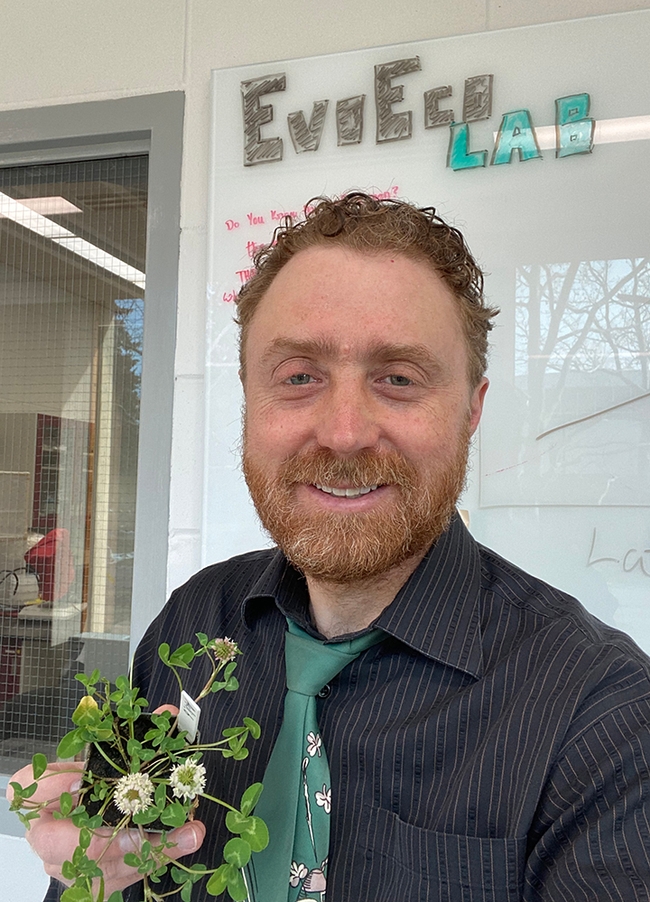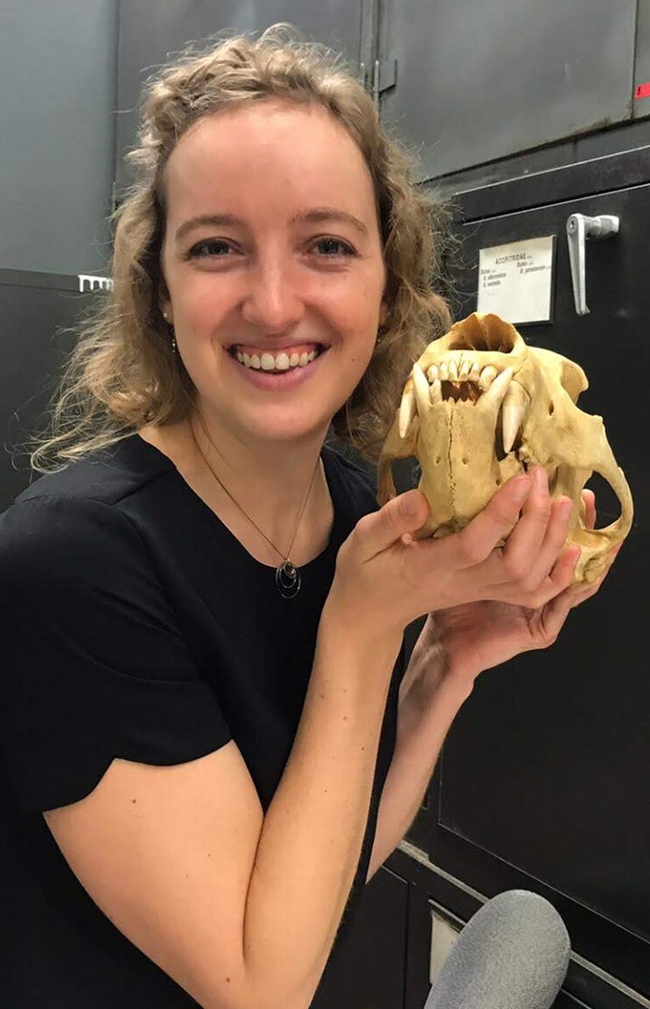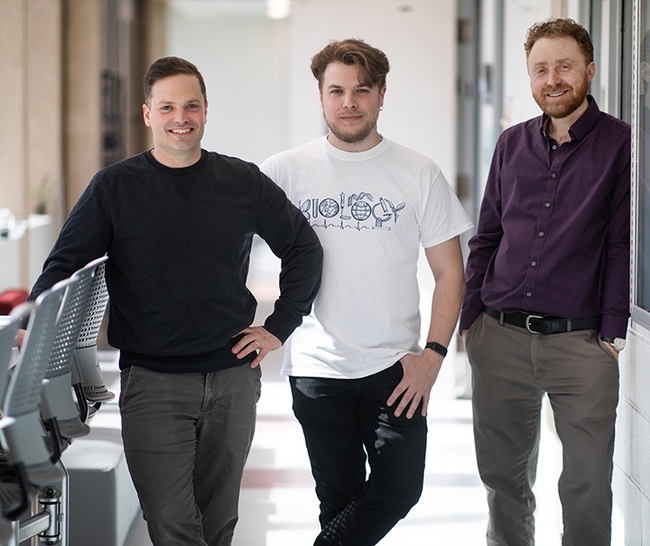
The three-leaf clover or shamrock symbolizes St. Patrick's Day. And today is Johnson's birthday anniversary. And tomorrow (March 18) is the birthday anniversary of his co-principal investigator, Rob Ness of the University of Toronto. What are the odds?
Johnson is also about 1/4th Irish, but "today, I feel 150 percent Irish."
Irish eyes are smiling!
Johnson is the principal investigator (PI) of the 287-member team that investigated white clover, Trifolium repens, in 160 cities in 26 countries. “We examined whether urban environmental change drives parallel evolution by sampling 110,019 white clover plants from 6169 populations in 160 cities globally," he said. "We found that urbanization leads to similar environmental changes across 160 cities throughout the world, which leads to repeated adaptive evolution in the cosmopolitan invasive plant white clover."
Among the co-authors are urban landscape entomologist Emily Meineke of the UC Davis Department of Entomology and Nematology and marine evolutionary ecologist Joanna Griffiths of the UC Davis Department of Environmental Toxicology. Meineke is an associate professor and Griffiths is a postdoctoral researcher. (See news story)
Was the publication planned for St. Patrick's Day? No, not at all. "It was complete happenstance."


Both Meineke and Griffiths worked on the project when they were doctoral students: Meineke at North Carolina State University (NCSU), Raleigh, and Griffiths at Louisiana State University (LSU), Baton Rouge.
The GLUE Project website describes the research as “the largest scale, best replicated test of parallel evolution ever attempted. To do this, we will study the evolution of the production of hydrogen cyanide (HCN) in white clover (Trifolium repens). We previously showed that white clover evolves parallel clines in HCN (a potent chemical defense) along urban-rural gradients in eastern North America.”
In addition to Johnson, the 12-member leadership team included two University of Toronto scientists: co-PI and assistant professor Rob Ness, the second author of the paper; and doctoral student James Santangelo, first author.
There's a traditional Irish blessing that says "May the road rise to meet you." The global roads on the scientific study of white clover converged to one on March 17.
It was like a science-based shamrock summit!
Attached Images:

Principal investigator (PI) Marc Johnson (far right) led the team with co-PI Rob Ness (far left), second author; and doctoral student James Santangelo (center), first author, all of the University of Toronto. The research was published in the journal Science on St. Patrick's Day (Johnson's birthday anniversary), with the official publication set March 18 (Ness' birthday anniversary).

The clover or shamrock symbolizes St. Patrick's Day, but this herbivore just considers it lunch. This image of a yellow-striped armyworm moth, Spodoptera ornithogalli, was taken in Louisiana. (Photo courtesy of Marc Johnson, University of Toronto)